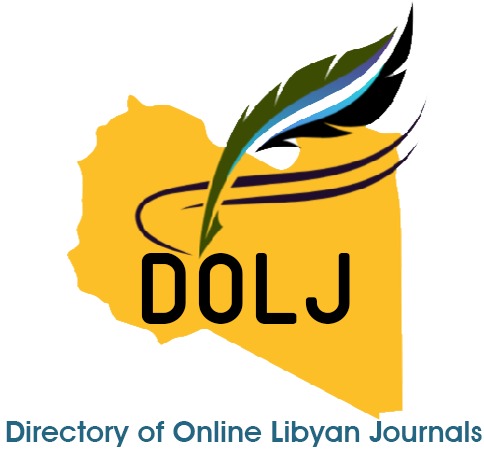A study on the prevalence of the malaria parasite in the city of Sebha among expatriate workers from neighboring countries.
DOI:
https://doi.org/10.37376/ljst.v15i1.7219Keywords:
On-Site (Pf/Pan) antigen, Rapid Malaria Test, Expatriates, MalariaAbstract
Libya eliminated malaria in 1973. The majority of malaria cases reported in Libya are imported cases, that travelled abroad, especially to neighboring countries where malaria is endemic. Rapid diagnostic test (RDTs) was conducted to determine the possible risk of malaria among expatriates residing in different areas in Sebha City. The results of this study showed that out of 363 expatriates,141 had an infection with malaria (38.8%). Infection of Plasmodium falciparum and Plasmodium vivax was reported among one hundred one (27.8%) and forty expatriates (11.01%) respectively. The infection rate was higher in males than females, reaching 39.2% and 31.2%, respectively. Infection of malaria was higher among expatriates who came from Chad (55.55%) and Niger (41.35 %). The correlation between the infection rate of malaria and the educational attainment of expatriates was substantially statistically significant (χ2 =9.571; P=0.002). This study confirms that the prevalence of malaria among expatriates is relatively high which may impose a high risk of re-introducing malaria to the southern regions of the country.
Downloads
References
Al-Haddad, I.M/N., Elsalem M.A.R. (2022) ‘Prevalence of malaria among expatriates in Sebha, Libya’, Sebha University J., 1, 17, pp. 9-14.
Bisoffi, Z. Matteelli, A. Aquilini, D. Guaraldi, G. Magnani, G. Orlando, G. Gaiera, G. Jelinek, T. Ron H. and Behrens, H.B. (2003) ‘Malaria clusters among illegal Chinese immigrants to Europe through Africa’, Emerg Infect Dis., 9(9), pp. 1177–1178.
Dayanand, K.K. Punnath, K. Chandrashekar, V. Achur, R.N. Kakkilaya, S.B. Ghosh, S.K. Kumari, S. and Gowda, D.C. (2017) ‘Malaria prevalence in Mangaluru city area in the southwestern coastal region of India’, Malar. J., 16, p. 492, doi: 10.1186/s12936-017-2141-0.
European Centre for Disease Prevention and Control (2019) Surveillance Atlas of Infectious Diseases. Solna European Centre for Disease Prevention and Control Available from: http://atlas.ecdc.europa.eu/public/index.aspx.
Eshag, H.A. Elenzer, E. Nahied, E. Talib, M. Mussa, A., Muhajir, A.M.A. Ibrahim, I.K. Sabo, A., Elzaki, S.G., Mohamed, Z., Hajissa, K. (2020) ‘Molecular epidemiology of malaria parasite amongst patients in a displaced place people’s camp in Sudan’, Trop. Med. Health., 48, 3, pp. 2-7.
Gebreel, A.O. Gilles, H.M. and Prescott, J.E. (1985) ‘Studies on the sero-epidemiology of endemic diseases in Libya, IV’, Malaria Ann. Trop. Med. Parasitol., 79:341–7.
Ginouves, M., Veron, V., Musset, L., Legrand, E., Stefani, A., Prevot, G., Demar, M., Djossou, F., Brousse, P. Nacher, M. and Carme, B., (2015) ‘Frequency and distribution of mixed Plasmodium falciparum–vivax infections in French Guiana between 2000 and 2008’, Malar. J., 14, 446.
Hamid, N.M., Abdalla, A.M. Aldlouli, A.Z. AlMaki, A.A., Mansour, A.M. Abdulnabi, A., Masoud, Ahmad, K.M. (2018) ‘Prevalence of malaria infection in Fezzan region’, J. Med Sci., 13m pp. 1–3.
Hawas, N.M; Abdella, A.M. Aldouli, A .Z. and Almaki, A.A. (2019) ‘Malaria prevalence in low transmission area. Jazan District of Saudi Arabia, Korean’, J. Parasitol, 57(3), pp. 233-242.
Imwong, M. Nakeesathit, S. Day, N. P. and White, N.J. (2011) ‘A review of mixed malaria species infections in anopheline mosquitoes’, Malar. J., 10, 253, 2-12.
Khalefa, A.S. Ghana, S., Rashid, N.M. and Shaibi, T. (2022) ‘Mosquito fauna (Dipter aCulicide) in Tarhuna region, Libya’, Zoodiversity, 56(2), pp. 111–116. DOI 10.15407/zoo2022.02.111.
Kassar H. Marzouk, D. Anwar, W.A. Lakhoua, C. Hemminki, K. and Khyatti, M. (2014) ‘Emigration flows from North Africa to Europe’, Eur. J. Public. Health, 1, pp. 2–5.,
MacdonaId, W.W. (1982) ‘Anophelines of Libya and their control’, Garyounis Med. J., 5, pp.72-74.
Martelli, G. Girometti, N. Vanino, E. Bottieau, E., Viale, P. (2015) Plasmodium falciparum malaria in migrants who transited Libya—Where did they contract malaria?, Trav. Med. Infec. Dis., 13(6), pp. 499–500.
Mahanay, F.J. Bashein, Abdulla, M. EI-Buni, Abdulnasser A. Sheebah, Almabrouk and Annajar, B. (2021) ‘Malaria in Illegal Immigrants in Southern Libya’, Libyan J. Med. Sci., 5(4), pp 158-161, DOI:10.4103/ljms.ljms_58_21.
Ramsdale, C.D. (1990)’ Anopheles mosquitoes and imported malaria in Libya’, Mosq. Syst. 22, pp. 34–40.
Shaiabi, T. (2017) Survey of the mosquito fauna of Fezzan South–Western Libya. Bulletin of the Entomol., Soc. Egypt, 56, pp. 301–312.
Snow, R.W., Marsh, K. (2010) ‘Malaria in Africa: progress and prospects in the decade since the Abuja Declaration’, Lancet, 376, pp. 137-139.
Snow, R.W. Amratia, P., Kabaria, C.W. Noor, A.M., Marsh, K. (2012) ‘The changing limits and incidence of malaria in Africa: 1939-2009’, Adv. Parasitol., 78, pp. 169–262.
Su, X.Z., Zhang, C., Joy, D.A. (2020) ‘Host-Malaria Parasite Interactions and Impacts on Mutual Evolution’, Front Cell Infect Microbiol., 10, pp. 1-20, 587933. doi: 10.3389/fcimb.2020.587933.
Tadesse, F. Fogatry, A.W., Deressa, W. (2018) ‘Prevalence and associated risk factors of malaria among adults in east Shewa Zone of Oromia Regional State, Ethiopia: a corss sectional study’, BMC, Public Health., 18(25), pp. 1-8.
The Libyan observer (2015) Malaria case detected in south Libya www. Libya observer.ly
Tilaye, T., Tessema, B., Alemu, K. (2021) ‘Malaria infection is high at transit and destination phases among seasonal migrant workers in development corridors in northwest Ethiopia. A repeated cross sectional study’, Res. Rep. Trop. Med., 12, pp.107–121.
World Health Organization (1996) The world Health report. Fighting diseases. Fostering development. Geneva: world Health organization).
World Health Organization (2011) Libya is free from local malaria transmission. https.www.emro.who.int.
World Health Organization. (2019) Regional and Trends in Burden of Malaria Cases and Deaths, Malaria Reports, 4 December, 2019Algeria and Argentina Certified Malaria-Free by WHO; WHO: Geneva, Switzerland. Available from: https://www.who.int/news-room/fact-sheets/detail/malaria.
World Health Organization. (2020), Fact sheet about malaria. Available from: http://www.who.int/mediacentre/factsheets/fs0tions.94/en/.
World Health Organization (2023), Fact sheet about malaria. Available from: http://www.who.int/mediacentre/factsheets/fs094/en/
World Health Organization (2024), Global Malaria Programme (GMP).malaria
Downloads
Published
How to Cite
Issue
Section
License
Copyright (c) 2025 Libyan Journal of Science &Technology

This work is licensed under a Creative Commons Attribution-NonCommercial-NoDerivatives 4.0 International License.









 LJST Copy rights form
LJST Copy rights form


